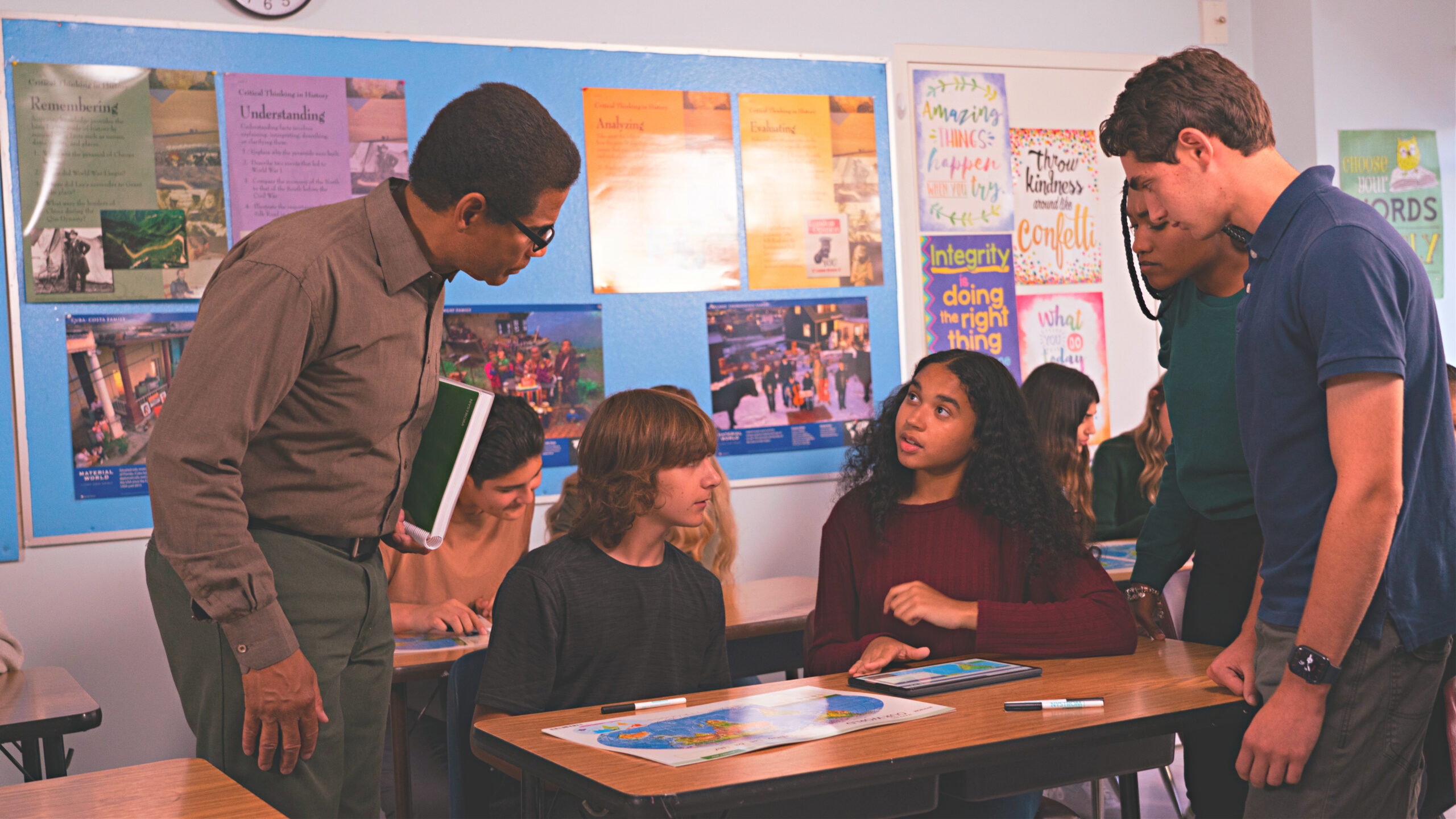
There are a few universal beliefs commonly voiced among history teachers. Students think history is boring and irrelevant, they struggle with literacy, and teaching an advanced placement course affords teachers the privilege of working with the more capable students.
I have always believed that part of my job is to challenge these notions. Working alongside students from on-level to advanced placement, I found a commonality related to self-efficacy. Many students believe themselves to lack ability when, in fact, they lack practice with failure and success.
Fostering a climate of self-belief is easier said than done. However, my approach to all classes has been the same. I establish a safe space for students to speak, give them a way to voice what they know, and celebrate their efforts to contribute. In this post, I will share my approach to using student discourse to build efficacy and engagement through classroom discourse.
The Set Up
In their 1998 published paper, “Praise for Intelligence Can Undermine Children’s Motivation and Performance”, Claudia Mueller and Carol Dweck discuss the downside of certain types of praise we give children. When we praise a student’s intelligence, their intelligence can become their identity. Therefore, they tend to lack persistence when faced with struggle and assume they are not smart enough for the task. Inversely, students praised for their efforts tend to endure because they learn to value improvement (Mueller and Dweck, 33-52). With this research in mind and understanding the importance of academic discourse in the classroom, I implemented 3 key steps to help set my students up for success.
- I established set norms for a respectable environment
- I scripted and limited forms of teacher talk
- I planned student interactions
1. Establishing Norms
There is nothing more awkward in a classroom than silence following a question. However, students tend not to speak up when they fear ridicule. Establishing norms for respect is a crucial first step. Your norms should be short, universal, and generally agreed upon by the class. It does not hurt to have them displayed for reference when the inevitable heated debate takes place. For instance, in a history classroom, students should understand there will be a differences of opinion about major topics. You may also want to establish what respectful language looks like.
Additionally, structuring norms within a lesson can help to establish what student discourse during a particular activity should look like. How should students phrase their discussion? How much time will they have? Setting these types of parameters leaves little room for them to feel lost or inept.
2. Scripted Teacher Talk
One of my biggest lessons as a teacher was learning I talk too much. I would be so excited about a topic that I would ask and answer a question in the same breath, leaving little room for my students to contribute. To combat this, I began scripting my teacher talk. This required that I create a detailed lesson plan with established activities following a lesson cycle. Looking at your lesson plan and knowing your students allows you to know what some common misconceptions may be. You may find places to insert questions that check for understanding or ways to clear up any confusion about any new topics or vocabulary. Don’t forget to script in praise for students who engage! You’d be surprised what students can come up with when given the chance.
3. Planned Student Interactions
In addition to planning when you are speaking, you should arrange time for students to speak with each other. This is a good time to remind students of the value of their voice and personal experience. Reluctant speakers often fall quiet or try to explain that they “don’t know” what to say. Structured discourse can prevent the opportunity for students to opt-out. Furthermore, hearing from and speaking to other students may offer a perspective that changes a student’s thinking or bolsters their confidence to share.

Helpful Tools
Strategies for Structured Conversation
- In their book “7 Steps to a Language-Rich, Interactive Classroom” John Seidlitz & Bill Perryman outline the QSSSA strategy. It provides a framework and scaffolded structure useful when getting reluctant speakers to participate (Seidlitz and Perryman). You would ask an open-ended question, and provide students with a sentence stem to begin their answer and a way to signal to you that they have a response ready (i.e. thumbs up). To add structure, provide a way for students to share (i.e. tallest person shares first), then assess the group by asking a few students to share their findings aloud.
- Silent Debate is useful for debating sensitive topics. For this activity, students would be debating in pairs. Students would be required to write out their arguments one at a time. Once person A has written their argument, person B would either counter or write an argument of their own. In my classroom, this activity was always timed. It established a protocol for getting students to respectfully listen to others’ arguments rather than commanding the conversation.
Scaffolds for Making Conversations Accessible
- Sentence and paragraph stems provide a writing structure for students needing help knowing where to begin. It also sets an expectation that students must write in complete sentences. Eventually, this structure can be dialed back, but it provides a foundation.
- Establishing a list of must-haves for student discourse or products takes the guesswork away from students and serves as a type of rubric (e.g. must include 3 pieces of accurate and specific evidence or must be written from the colonist’s point of view). My most resistant students responded well to MUST-HAVES knowing the assignment wouldn’t become a “gotcha” moment.
- Word Banks can be used for any speaking or writing expectation. Your students may speak with more conviction if provided with “need to use” vocabulary to assist.
Personal Takeaways
At the start of each school year, I welcomed students in all classes, including advanced placement, who were afraid that they were not “the smart student” in the room. I would repeat the following mantra to them until they’d had it memorized: Confidence is built. No matter the level or learning difference we all have something to learn, we all have something to say, and we will all contribute.
As a teacher, my job is to provide every opportunity for students to experience success and to praise their efforts enthusiastically. As a result, my students began to trust me as their teacher, as well as their classmates. Most importantly, they began to trust themselves. Though branded as challenging, students began to ask to be scheduled into one of my sections, and state test scores soared. I now challenge you to give your students something to talk about.
Learn about the ways Social Studies School Service can support your professional development
References
Mueller, Claudia M., and Carol S. Dweck. “Praise for Intelligence Can Undermine Children’s Motivation and Performance.” Journal or Personality and Social Psychology, vol. 75, no. 1, 1998, pp. 33-52. National Library of Medicine, https://pubmed.ncbi.nlm.nih.gov/9686450/.
Seidlitz, John, and Bill Perryman. 7 Steps to a Language-Rich, Interactive Classroom. Seidlitz Education, 2021.
Jennifer Charles is a native Houstonian residing in Houston, Texas. She served as a social studies educator in grades 9-12 for a combined nine years, a campus-level department chair for three years, a campus-level teacher specialist for one year, and one year as a member of the district-level Teacher Leader Corps – all within the Houston Independent School District. Jennifer is currently a Partnership and Instruction Specialist with Social Studies School Service.
